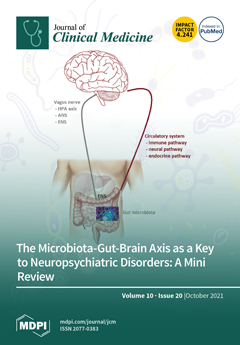Prognostic factors for clinical outcome after spinal cord (SC) injury (SCI) are limited but important in patient management and education. There is a lack of evidence regarding magnetic resonance imaging (MRI) and clinical outcomes in SCI patients. Therefore, we aimed to investigate whether baseline MRI features predicted the clinical course of the disease. This study is an ancillary to the prospective North American Clinical Trials Network (NACTN) registry. Patients were enrolled from 2005–2017. MRI within 72 h of injury and a minimum follow-up of one year were available for 459 patients. Patients with American Spinal Injury Association impairment scale (AIS) E were excluded. Patients were grouped into those with (
n = 354) versus without (
n = 105) SC signal change on MRI T2-weighted images. Logistic regression analysis adjusted for commonly known a priori confounders (age and baseline AIS). Main outcomes and measures: The primary outcome was any adverse event. Secondary outcomes were AIS at the baseline and final follow-up, length of hospital stay (LOS), and mortality. A regression model adjusted for age and baseline AIS. Patients with intrinsic SC signal change were younger (46.0 (interquartile range (IQR) 29.0 vs. 50.0 (IQR 20.5) years,
p = 0.039). There were no significant differences in the other baseline variables, gender, body mass index, comorbidities, and injury location. There were more adverse events in patients with SC signal change (230 (65.0%) vs. 47 (44.8%),
p < 0.001; odds ratio (OR) = 2.09 (95% confidence interval (CI) 1.31–3.35),
p = 0.002). The most common adverse event was cardiopulmonary (186 (40.5%)). Patients were less likely to be in the AIS D category with SC signal change at baseline (OR = 0.45 (95% CI 0.28–0.72),
p = 0.001) and in the AIS D or E category at the final follow-up (OR = 0.36 (95% CI 0.16–0.82),
p = 0.015). The length of stay was longer in patients with SC signal change (13.0 (IQR 17.0) vs. 11.0 (IQR 14.0),
p = 0.049). There was no difference between the groups in mortality (11 (3.2%) vs. 4 (3.9%)). MRI SC signal change may predict adverse events and overall LOS in the SCI population. If present, patients are more likely to have a worse baseline clinical presentation (i.e., AIS) and in- or outpatient clinical outcome after one year. Patients with SC signal change may benefit from earlier, more aggressive treatment strategies and need to be educated about an unfavorable prognosis.
Full article






